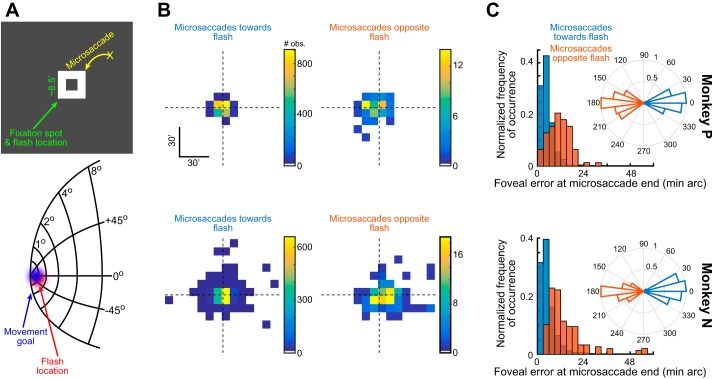Fig. 5.
Exploring microsaccadic inhibition and kinematic alterations when the flash and movement goal are almost colocalized (experiment 2). A: the logic of experiment 2. If a microsaccade is triggered to correct for a foveal motor error, then the fixation spot (a white “frame” of pixels with a hole in the middle) is close to the movement goal of the microsaccade (top). Thus introducing a transient flash on the fixation spot makes the flash-related and movement-related spikes in oculomotor maps like the SC map model shown (Hafed and Chen 2016) almost colocalized. B: in each monkey (i.e., within each row), we plotted the distribution of landing eye positions at microsaccade end for either “toward” (left plot) or “opposite” (right plot) microsaccades. Toward and opposite movements were classified according to the inset polar plots in C, showing microsaccade angle relative to the axis connecting eye position at movement onset and the center of the fixation spot (Materials And Methods). Toward microsaccades brought gaze closer to the fixation spot (also shown in more detail in C). Moreover, there were many more toward than opposite microsaccades. C: for either toward or opposite microsaccades, and for each monkey individually, we plotted a normalized histogram of the final eye position after microsaccade end (i.e., the final foveal motor error). Toward microsaccades consistently decreased eye position error (compare bluish and brownish histograms in each monkey; P < 0.00001 for each monkey, Wilcoxon rank sum test). Note that the histograms were normalized to facilitate viewing of the different landing eye position errors. In reality, there were very few opposite microsaccades (see B and Fig. 6A).

